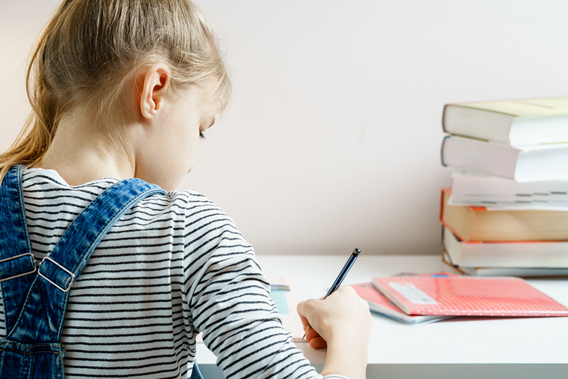
Tips for a More Peaceful Homework Routine

Written by: Nanny Secours
After ending the school year in the midst of a pandemic, between not going to school and homeschool curriculums, both children and parents went through a chaotic and unnerving time. Getting back into the structure, rules and expectations of school will likely be challenging for some. It might be complicated to get back into a homework routine if homeschooling was a source of conflict between parents and children. The memories of these tensed moments might disrupt the process of returning to “normal.”
Thankfully, parents can use the following tips to make their children’s homework routine less complex—and even appealing.
Finding the Right Time
- It won’t necessarily be the same for every family or for every child within a family. Of course, organization-wise it’s easier if all children do their homework at the same time. But it can be interesting to listen to each child’s needs if that allows them to be more attentive and receptive, so the session doesn’t drag on. By setting a specific schedule for each child, parents can be completely available for and focus on one child at a time. This can be a particularly good method for families with special needs children.
- Parents should let their kids relax between coming home and doing homework. Children need time to play, eat a snack, run outside, or simply talk about their day.
- Parents should also draw breath and recharge their batteries to be fully present for their children.
- For some families, the right time to do homework might be before dinner, while for others it’s after, or even in the morning… There’s no strict rule nor reason to feel guilty!
Choosing the Right Place
- It’s important to choose a place that doesn’t have too much stimulation so the child can concentrate. TVs and phones should be turned off.
- Ideally, choose a desk or table that’s big enough to fit all the supplies necessary to do the homework.
Planning the Session With Your Child
- You can decide with your child in which order the homework will be done. Suggest starting with what seems the hardest or the easiest, depending on your child’s personality. Children who get discouraged quickly might need to start with the easiest tasks to get momentum, while children who lack self-confidence might feel proud to have completed the hardest tasks first with encouragements and might finish the rest more easily.
- It can be a good idea to plan breaks during the session, even just a few minutes between subjects (drink a glass of water, go to the bathroom, run around the table a few times, etc.). This will help your child focus better on the next subject.
- More independent children can use a list to cross out completed tasks as they go, which allows parents to quickly check all the homework has been done.
Have fun!
- The more parents make homework fun and appealing, the more they’ll get their children’s cooperation. For example, children can learn their vocabulary by jumping on letters on the floor. When kids are moving, it stimulates their kinesthetic system which triggers body memory and, at the same time, they have fun learning!
- There are apps on which children can “play” maths with their parents, and even playing cards to practise subject-verb agreement.
- Certain board games can be transformed to practise English or French… If the parent and child have fun during these learning sessions, it will be easier to convince the child to do it again the following day.
With these tips, the new school year should be more peaceful and pleasant, both for parents and children!
Perrine Mangeot
Psychomotrician
Member of Réseau Nanny Secours


